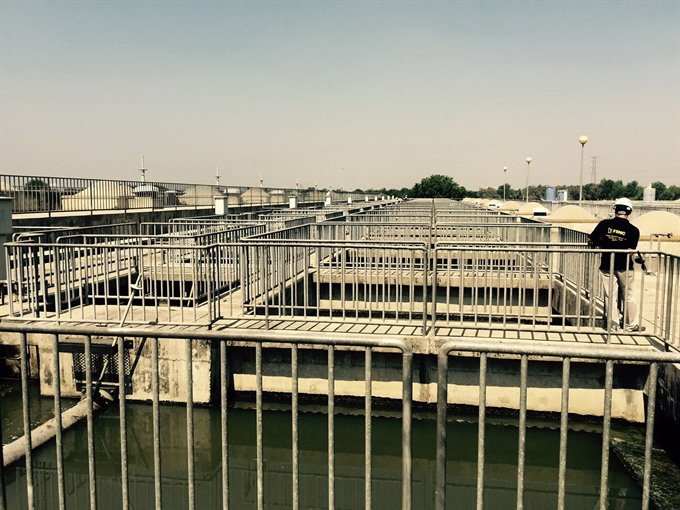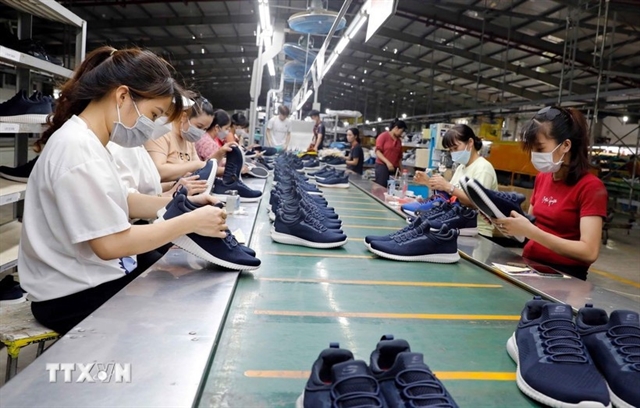 Environment
Environment

HCM City has been taking a number of measures to treat wastewater, including setting up several treatment plants.
 |
| The Bình Hưng sewage treatment plant in Bình Chánh District. HCM City is building the second phase of the plant to increase its capacity from 141,000cu.m to 469,000cu.m per day. VNS Photo Bồ Xuân Hiệp |
HCM CITY — HCM City has been taking a number of measures to treat wastewater, including setting up several treatment plants.
Under a pollution reduction programme, one of seven related to flood mitigation and responding to climate change and sea-level rise in 2016-20, the city has set itself a target of treating 80 per cent of total daily household wastewater.
Rapid population growth and urbanisation have created great pressure on the environment, especially the city’s water sources.
Most canals in the city are now polluted, affecting people’s lives.
The amount of domestic wastewater generated daily is around 1.75 million cubic metres.
But with only two treatment plants, Bình Hưng and Bình Hưng Hòa, the city is only able to treat 171,000cu.m, or 10 per cent of its wastewater.
At some establishments, including hospitals, clinics, and service providers, wastewater is only partly treated before being discharged directly into lakes, canals and rivers, polluting them.
Nguyễn Thị Thanh Mỹ, deputy director of the Department of Natural Resources and Environment, said the city was implementing multiple solutions to meet the increasing need for wastewater treatment.
The Centre for Operation of Flood Prevention Programme would continue to review and tweak the master plan for urban drainage and build wastewater treatment facilities to ensure all wastewater is treated, she said.
The city is also urging the public not to throw litter into canals and stepping up inspections of companies that discharge wastewater to reduce pollution and degradation of water sources and the environment, she added.
Wastewater treatment projects
The city has set up a number of wastewater treatment plants.
In addition to the two major ones, Bình Hưng and Bình Hưng Hòa, a wastewater treatment plant has also been built in District 2’s Bình Khánh Ward with a capacity of 3,000cu.m per day besides a sewer system to collect wastewater at the Nhiêu Lộc – Thị Nghè Canal in Districts 1, 3, 10, Phú Nhuận, Gò Vấp, and Tân Bình.
The second phase of the Bình Hưng plant is being built to increase its capacity to 469,000cu.m per day, and is expected to be completed next year.
The first phase of the Nhiêu Lộc – Thị Nghè Wastewater Treatment Plant with a capacity of 480,000cu.m per day in District 2 has been completed.
The first phase of the Tham Lương – Bến Cát Wastewater Treatment Plant with a capacity of 131,000cu.m per day is expected to go on stream by the end of this year.
The Suối Nhum Wastewater Treatment Plant in Linh Trung Ward, Thủ Đức District, with a capacity of 65,000cu.m a day is expected to start operating next year.
The city is also building a bio-treatment pond to treat the Ba Bò Canal, and it is expected to be ready by 2019.
The treatment facility is part of the Ba Bò Canal improvement project started in 2010, and can treat 21,500cu.m of wastewater per day, mainly from Bình Dương Province collected through the Ba Bò Canal.
In 2019-20 the city plans to build four more plants: the Sài Gòn West Sewage Treatment Plant with a capacity of 150,000cu.m per day, the Tân Hóa - Lò Gốm plant with a capacity of 300,000cu.m, the Bình Tân plant in Bình Hưng Hòa with a capacity of 180,000cu.m, and North Sài Gòn 1 plant with a capacity of 170,000cu.m. — VNS




